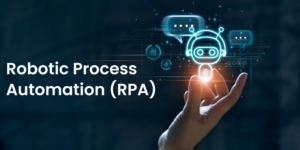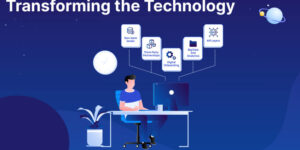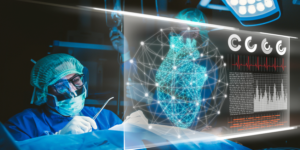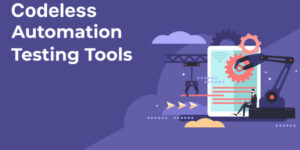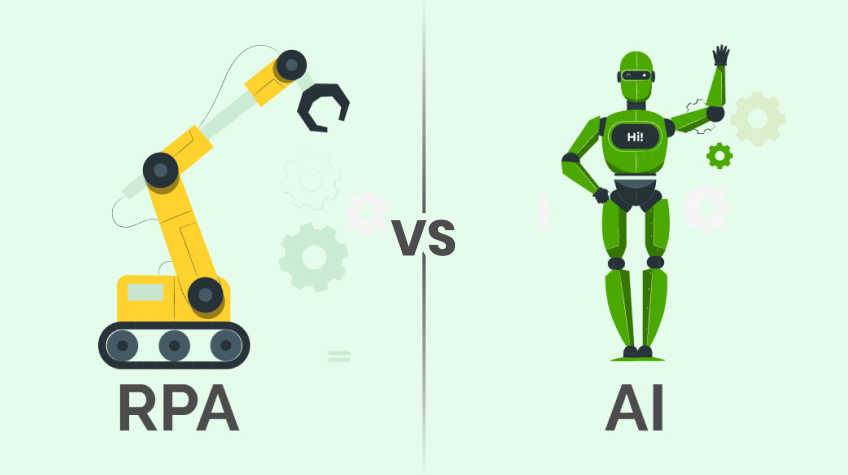
Artificial Intelligence (AI) and Robotic Process Automation (RPA) have emerged as disruptive technologies that are changing company operations in the quickly changing technological landscape. Both technologies seek to increase productivity and streamline procedures, but they are not the same and have different uses. We’ll examine the differences of RPA vs AI in this post, as well as their special qualities and organizational advantages.
Understanding robotic process automation (RPA)
The term robotic process automation (RPA) describes the use of software “bots” to automate rule-based, repetitive tasks in corporate processes. These virtual assistants (bots) replicate how people might engage with digital systems—using apps, entering information, and carrying out activities Unlike AI, RPA doesn’t possess cognitive abilities or the capacity to learn from experience. Instead, it follows predefined rules and instructions to perform tasks.
➤ Key Characteristics
- Rule-Based Automation: RPA is designed to handle tasks governed by explicit rules. It excels in scenarios where tasks are repetitive, structured, and involve data manipulation.
- No Learning Capabilities: RPA bots do not learn or adapt over time. They execute tasks exactly as programmed and require precise instructions to function.
- User Interface Interaction: RPA interacts with applications through the user interface, essentially “reading” and “writing” data in the same way a human operator would.
➤ Benefits of RPA
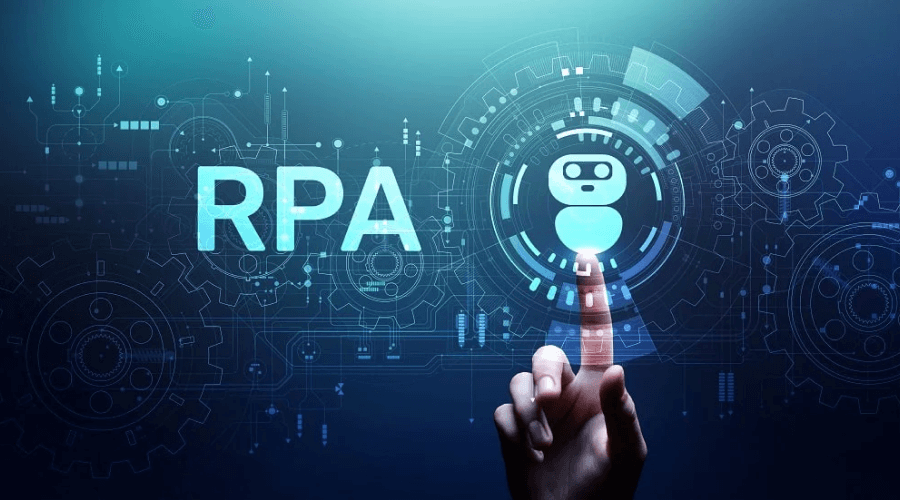
- Increased Efficiency: RPA reduces the time and effort required for manual, repetitive tasks, leading to improved operational efficiency.
- Error Reduction: Automation minimizes the risk of human errors in data entry and routine processes, contributing to higher accuracy and reliability.
➤ Use Cases
- Invoice Processing: Bots can be programmed to extract data from invoices, validate information, and update financial systems.
- Employee Onboarding: RPA can streamline the onboarding process by automating tasks such as account setup, documentation verification, and training module assignments.
Exploring Artificial Intelligence (AI)
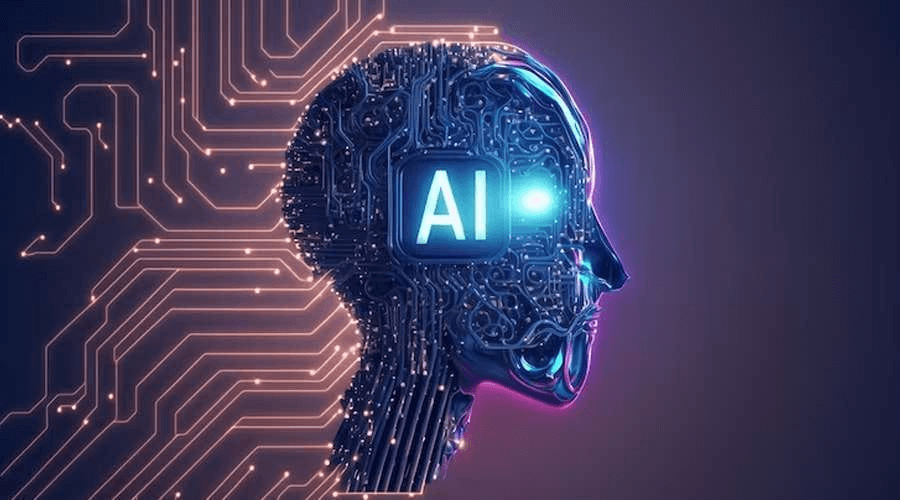
Artificial intelligence (AI) refers to a wider set of technologies that let machines carry out jobs that ordinarily demand for human intelligence. This involves comprehending normal language, picking up knowledge from experience (machine learning), and approaching issues in a fashion that mimics human thought processes. AI systems can adjust and perform better with time, in contrast to RPA systems.
➤ Important attributes
- Machine Learning: Without the need for explicit programming, AI frequently uses machine learning algorithms to examine data, spot trends, and make predictions or judgements.
- Cognitive Abilities: AI systems are capable of performing cognitive tasks like language comprehension, perception, reasoning, and problem-solving.
- Adaptability: AI models are able to adjust their behavior and enhance their performance over time by learning from fresh information and experiences.
➤ Benefits of AI
- Advanced Analytics: AI enables organizations to gain insights from large datasets, facilitating data-driven decision-making.
- Natural Language Processing (NLP): AI systems can understand and generate human-like language, enhancing communication between machines and humans.
- Automation Beyond Rules: Unlike RPA, AI is not confined to rule-based automation. It can handle complex, unstructured tasks and adapt to changing circumstances.
➤ Use Cases
- Customer Service Chatbots: AI-powered chatbots can engage with users in natural language, providing instant responses and resolving queries.
- Predictive Analytics: AI algorithms can analyze historical data to predict future trends, helping organizations make informed strategic decisions.
- Image and Speech Recognition: AI excels in tasks like image and speech recognition, enabling applications like facial recognition and voice assistants.
Synergies and Integrations
While comparing RPA vs AI, it’s important to note that they have distinct characteristics. However, they are not mutually exclusive. In fact, they can complement each other to create more powerful and versatile automation solutions
- Intelligent Automation: Intelligent Automation combines RPA and AI to create a holistic approach to process automation. RPA handles rule-based tasks, while AI enhances the system’s capabilities by providing cognitive insights, learning from data, and adapting to new scenarios. This synergy enables organizations to automate a broader range of processes, including those that involve unstructured data and decision-making.
- Improved Decision-Making: AI’s analytical capabilities can be integrated into RPA workflows, allowing organizations to make more informed decisions. For example, an RPA bot handling invoice processing can leverage AI algorithms to detect anomalies or patterns in financial data, providing valuable insights for decision-makers.
- Adaptive Workflows: Integrating AI into RPA systems enables workflows to adapt to changing conditions. For instance, an AI component can analyze customer interactions and dynamically adjust RPA processes to optimize responses based on evolving customer needs and preferences.
Choosing the Right Technology for the Job
When deciding between RPA and AI for a particular use case, it’s crucial to understand the nature of the tasks involved and the desired outcomes.
- Rule-Based and Repetitive Tasks: If the tasks are rule-based, repetitive, and involve structured data, RPA is often the more suitable choice. RPA excels in automating routine processes with clear instructions.
- Complex and Adaptive Processes: For tasks that require adaptability, learning from data, and handling unstructured information, AI is the preferred option. AI can excel in scenarios where decision-making involves a degree of uncertainty or complexity.
- Combined Approach: In many cases, organizations benefit from combining RPA and AI to leverage the strengths of both technologies. This hybrid approach, known as Intelligent Automation, provides a comprehensive solution for diverse automation needs.
Conclusion
In conclusion, when considering RPA vs AI, it’s evident that while they share the common goal of automating processes, they differ in their capabilities and applications RPA is best suited for rule-based, repetitive tasks, offering efficiency and accuracy. AI, with its cognitive abilities and learning capabilities, excels in handling complex, unstructured tasks and providing valuable insights.
For businesses looking for all-encompassing automation solutions, the combination of RPA with AI, or Intelligent Automation, creates new opportunities. To accomplish their automation goals, businesses can choose when and how to use RPA, AI, or a combination of the two by knowing the distinct qualities and advantages of each technology. The future of intelligent and automated business operations is expected to be greatly influenced by the partnership of RPA and AI as technology develops.

